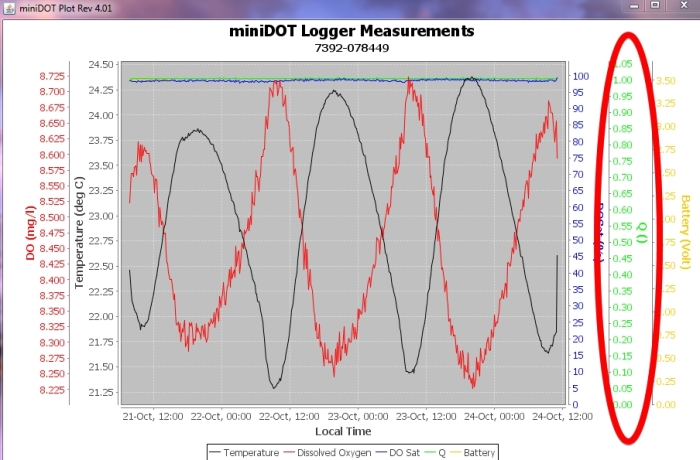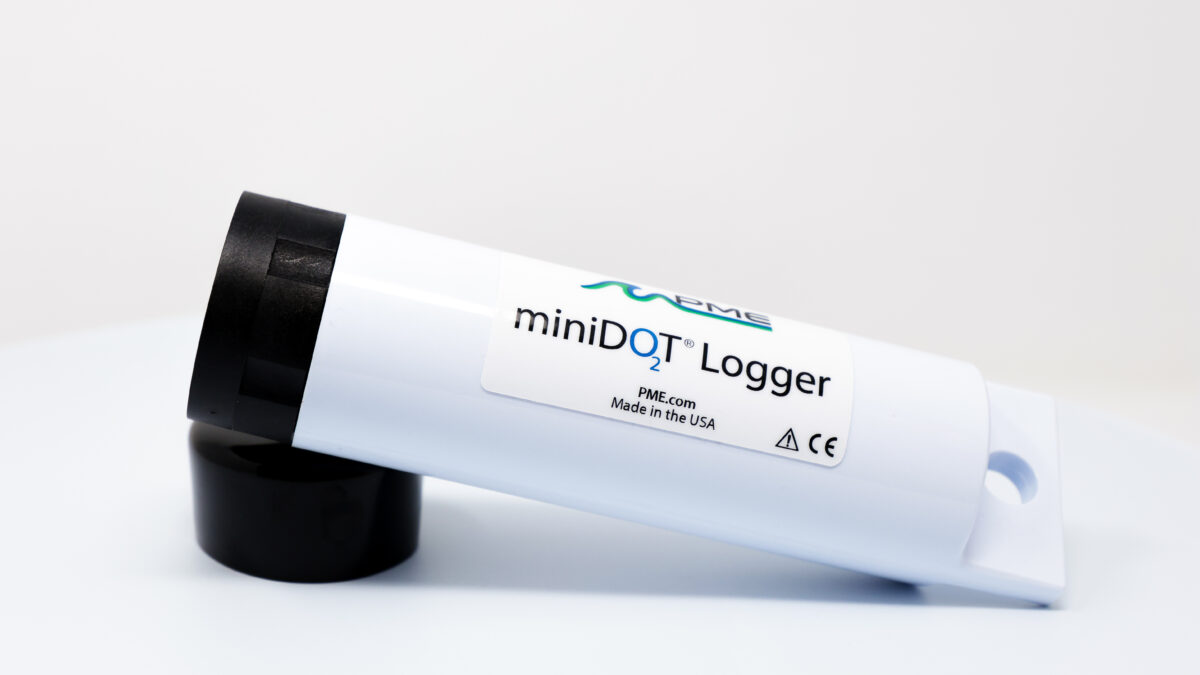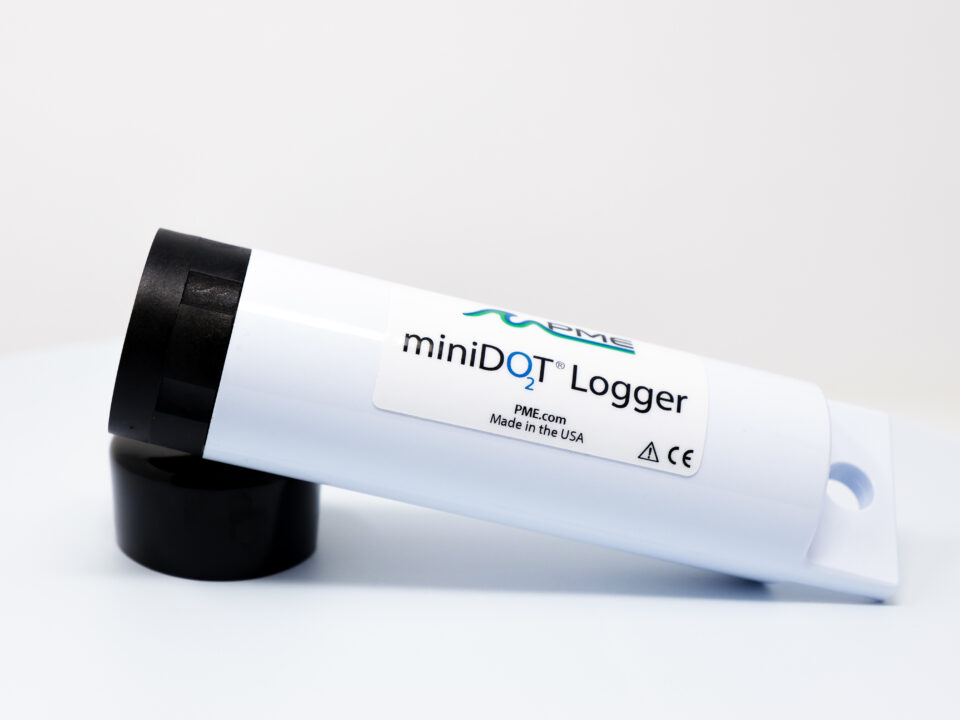
PME Appoints New CEO
December 18, 2014Some of you may have noticed that there is a Q measurement column in the raw data from the miniDOT® Logger and that this column appears in miniDOT plots.
Now for the science….The miniDOT uses an optical method of determining oxygen concentration. This method takes advantage of the oxygen ‘quenching’ effect that is observed of certain types of fluorescent materials. Photons of excitation light entering these materials transfer energy, excite, electrons of the molecules that make up the materials. These excited electrons briefly occupy higher energy levels but ultimately return to their normal, rest, state. There are at least two paths by which these electrons can loose their excited energy and return to rest. One path is to emit photons. Another path is to loose the energy by transfer to an oxygen molecule. This non-emissive energy loss is the quenching effect.
The presence of oxygen provides a non-emissive path and thereby reduces the intensity of emission. Also, by providing this path oxygen reduces the average length of time that electrons remain in the excited state. So there are two approaches to measuring the amount of oxygen present: measure the intensity of emission or measure the lifetime of emission.
Optical oxygen sensors typically use emission lifetime to sense oxygen. This is because the lifetime is not as sensitive to various problems that can affect the emission intensity. For example as the excitation light source ages it can emit less excitation light. This doesn’t affect the lifetime but does affect the emission light intensity, less excitation light resulting in less emitted light. There are a host of other circuit and physical problems that likewise can affect emitted light intensity.
The miniDOT makes both lifetime and intensity measurement at each measurement time. The [DO] value recorded by the miniDOT is determined from the emission lifetime. However, miniDOT software also computes the [DO] determined from the emission intensity.
Q is the ratio of the [DO] as determined from emission intensity to the [DO] as determined by emission lifetime. [DO] should be the same no matter which measurement technique is used. So [DOlifetime] = [DOintensity] and therefore [DOlifetime]/[DOintensity] = Q is ideally 1.0. In practice miniDOTs report Q to very close to 1.0.
The miniDOT is a sensor/logger that can evaluate its own operation. Q provides a quality check on the miniDOT operation at each measurement. We believe that a Q measurement of 0.7 or higher means that the miniDOT is operating in good condition. Q < 0.7 likely indicates some serious measurement problem.
Contact PME if you see significant Q variation!





